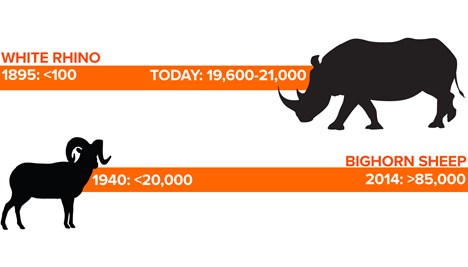Hunting plays a crucial role in our society. Conservation efforts, wildlife populations, and the economy would be severely hurt if it were to disappear.
Hunting is a tradition worth fighting.
- The U.S. economy would lose out on nearly $9.4 million every day (National Sportsman Shooting Foundation, “Hunting in America- An Economic Force for Conservation”)
- More than $3.4 billion of conservation funding would be lost, nearly 70% of the total budget. (National Sportsman Shooting Foundation, “Hunting in America- An Economic Force for Conservation”)
- The U.S. government would not benefit from the large sum of excise taxes paid by hunters and shooters- over $11 billion since 1937 (NSSF, “Key Facts About Hunters and Shooters”)
- State funds would lose the $100 million contributed by hunters every year (NSSF, “Key Facts About Hunters and Shooters”)
- In the United States, 680,000 jobs generated by sportsman would be gone (NSSF, “Key Facts About Hunters and Shooters”)
- The following American animal populations would not have seen the dramatic increase in the last 50-100 years without the help of hunter’s conservation funds… (Rocky Mountain Elk Foundation, “25 Reasons Why Hunting is Conservation)
- White-tailed deer: increased from 500 thousand to 32 million
- Ducks/waterfowl: increased from extremely few to 46 million
- Rocky mountain elk: increased from 41 thousand to 1 million
- Wild turkeys: increased from 100 thousand to 7 million
- Pronghorn Antelope: 12 thousand to 1 million
- $20 billion paid by sportsman for on the ground conservation projects in every state would be lost (Congressional Sportsmen Foundation, “America’s Sporting Heritage”)
- In the U.S. the number of auto accidents involving deer could increase 218% (International Association of Fish and Wildlife Agencies, “Potential Costs of Losing Hunting and Trapping as Wildlife Management Methods”)
- Taxpayers would have to pay upwards of $9.3 billion dollars each year for deer control (International Association of Fish and Wildlife Agencies, “Potential Costs of Losing Hunting and Trapping as Wildlife Management Methods”)
- Americans would have to pay an additional $265 million each year to control damage to homes done by furbearers v (International Association of Fish and Wildlife Agencies, “Potential Costs of Losing Hunting and Trapping as Wildlife Management Methods”)
- Costs incurred by wildlife-related crop damage would increase 3 billion dollars annually. (International Association of Fish and Wildlife Agencies, “Potential Costs of Losing Hunting and Trapping as Wildlife Management Methods”)
- An increase in health care and disease control for rabies would cost an estimated 1.45 billion each year. (International Association of Fish and Wildlife Agencies, “Potential Costs of Losing Hunting and Trapping as Wildlife Management Methods”)
- Those who prefer to eat lean, “free-range” meat, instead of meat bought at the grocery store, would find themselves with far fewer options.
- Needy families in the U.S. would no longer receive help from non-profits run by hunters such as the Hunters for the Hungry program, which provides over 8 million meals to people in need every year.
- To learn more about how hunters fund wilderness conservation, click here.












